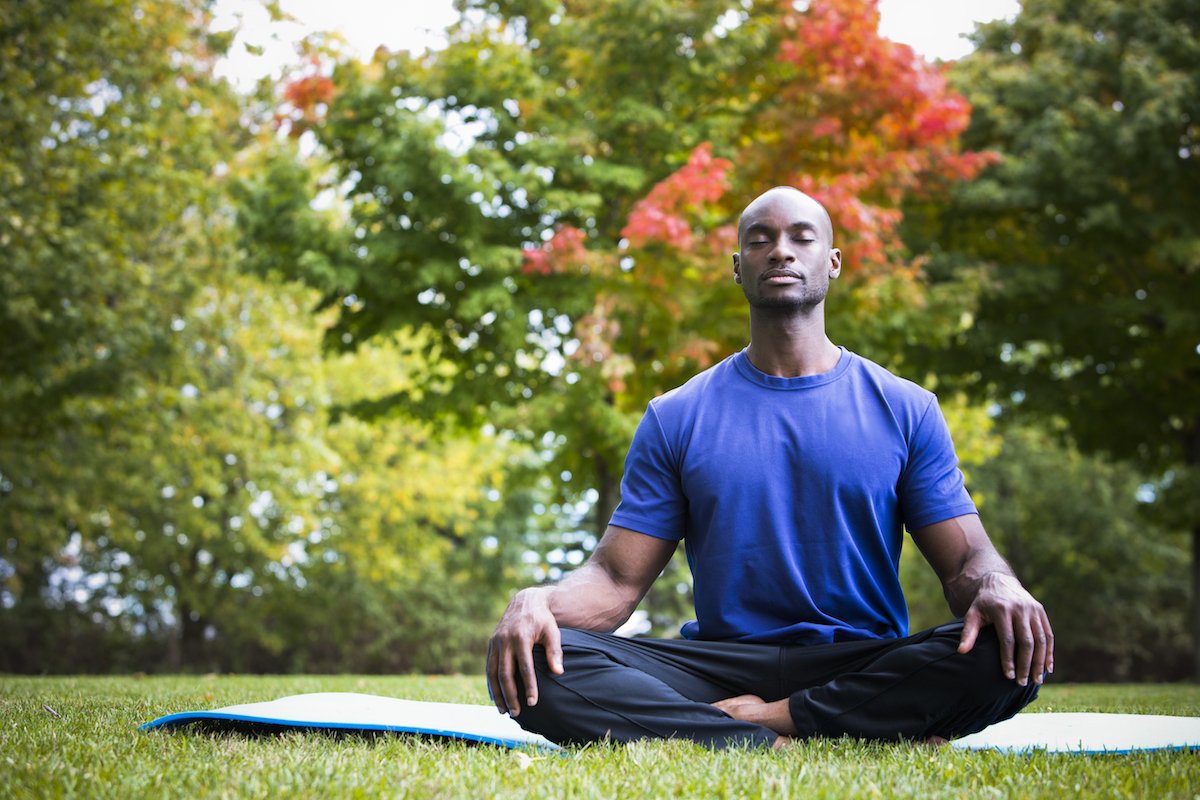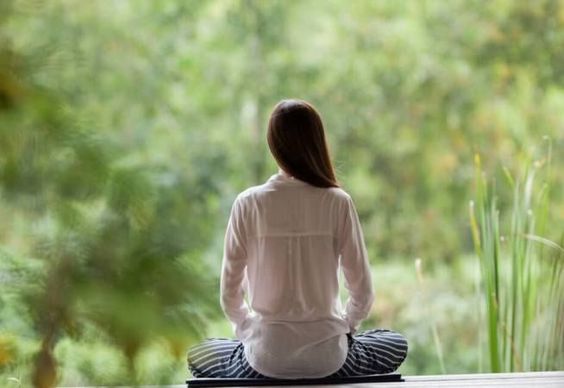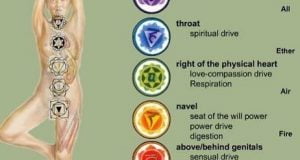
More or less everyone is familiar with the term Transcendental meditation (or TM). But do you know that Transcendental Meditation’s other name is Vedic Meditation? This meditation is a mental condition in which a person tries to concentrate his mind. Many religious traditions and beliefs have been practiced in meditation since ancient times.
Although meditation is a mental condition in itself, it is also familiar as an exercise. There is no harm to its practice. So if you practice regularly, you can maintain your mental balance in adversity and gain many other benefits. With this article, you will get information about this Meditation. So, let’s see what it means
What Is Vedic Meditation?

Vedic Meditation is a mantra, which is a technique of achieving internal peace and spiritual renewal by focusing on repetitive mantras in a quiet place. When the mind becomes “stable,” the practitioner can go beyond “thinking” and enters into a silent state of ultimate happiness and flushing.
Although Vedic Meditation is both religious and non-religious, parallelism can’t be denied between the practice of meditation and the practice of religious prayer rituals. Sitting in the original posture for 15-20 minutes, the recitation of a mantra, or listening to a simple sound to clear the mind’s thoughts
When with Muslim prayers, in which there is a fixed posture and which contains oral repetition. So, it is compared with the prayers prevalent by some Christians. In this, you will have to repeat a word or phrase, and kneel or adopt any other currency to be formed for a particular currency.
For its similarity and goodness for religious prayers, it seems to be bigger than it, it attracts meditation with clarity on it, hence, the Vedic meditation is said to be religious.
On the other hand, in the Christian faith or Islam, the purpose of prayer is a divine soul and often involves prayer, but the practice of emotional meditation is to make the mind null and it does not plead with God, and that is the reason why is this practice partially called non-religious.
History Of Vedic Meditation:

The foundation of this meditation is found in Hinduism. This meditation’s origin is in India, where Guru (or Maharishi) Mahesh Yogi teaches it based on his interpretation of Hindu Vedic traditions.
Maharishi started practicing it in the 1950s, and since then it has become one of the most comprehensive research and practice meditation techniques.
Scientific studies conducted by the American Cancer Society have concluded that there is no proven effect on the condition of meditative behavior. But, many people who practice meditation say that their relaxation and self-understanding have increased greatly.
How Does The Vedic Meditation Work?

It is not clear what happens in body and mind at the time of Vedic meditation. Research is going on, but for the benefit of this meditation, the evidence has found that the result is only experiential, not scientific.
Saying this does not mean that there is no effect of emotional meditation. But there is no way to measure it in Western medicine only.
Vedic meditation is an underlying spiritual practice, and it depends on the spiritual world. So, the scientific method depends on the physical or supernatural world, and it is not surprising that it becomes ineffective in studying the spiritual or supernatural world.
Those who practice Vedic meditation, are setting their mind above their soul; they go beyond themselves to look inside themselves, expecting that they put their minds on God’s soul.
A warning against a person’s focus on the mind above the body does not mean that the body is bad or that thinking of any idea about it is automatically evil.
Here Are Some Traditional Sanskrit Mantras/Mantras With Meaning

To get the most benefits of meditation, sit, relax and rest while uttering any of these mantras. And keep on practicing because practice makes perfect.
OM:
Om in the primordial mantra. This is the sound of our universe or, as per Indian philosophy, it is the sound of pure consciousness.
When you repeat this mantra, it helps you get rid of personal anxieties and join in with the versatile sound. This is one of the most popular mantras for practicing meditation.
OM MANI PADME HUM:
It is a charming mantra meaning “the glory in the lotus.” The Lotus flower grows in the mud. This mantra summons your ability of transformation, and your power to overcome as well as find the treasure in difficulty.
This helps your body release stress and relax your body to enjoy every bit of your life to the fullest.
SO HUM:
This is one more ancient mantra. It means “I AM THAT”. Not just you can connect with pure consciousness, but you can participate in that consciousness using this mantra for your meditation.
Benefits of Vedic Meditations:

Here are some benefits you will get if you perform this meditation daily.
Protects From Negative Energies:
Many people use Mantra to escape from incidents, accidents, or evil forces. For worldly desires, Chant mantras for the fulfillment of any worldly desires or material desires.
For the fulfillment of any wish, one hopes to fulfill one’s desires with the mantra of some goddess, deity, or other powers.
By seeking any positive effect from the mantra-like Goddess, Bhagwan, Yaksha, Snake, etc., one can find the desired groom.
Provides Good Memory & Concentration:
Mantra means to bind the mind into a system. When the mind is tied into a scenario, the person becomes mentally powerful, and engagement increases. Increased concentration and learning power of mantra gives better concentration and learning power.
Because when you chant the mantra, the vibrations emanating from it activate the chakras present on the face and head, which increases the mind. Regular chanting of the mantra produces a kind of hormone which keeps the mind calm and relaxes the body. This makes it easier to focus.
Be Emotionally Balanced And Calm:
Your emotions have physical and mental components, so as your thinking becomes clearer through Vedic meditation, your emotions also become more transparent. By continuously chanting your Ishta or any powerful mantra, one gets connected with the positive energy and powers here.
A goddess or a deity is worshiped by a mantra or a mantra, a ghost or a vampire is also chanted by a mantra, and a mantra also achieves a yakshi and a yaksha. If there is any obstacle in your life, then you can solve that problem by chanting the mantra.
Think Clearly And Creatively:
The ability to relax and generally have a lower-stress level at the moment allows your brain to function better, so you’re more creative and productive.
When a person is very anxious, he is surrounded by various negative thoughts which make the situation more dangerous than before.
To avoid any thoughts, chanting any mantra develops confidence and positive energy in the mind. This ends grief and pain. It calms the person mentally.
Helps You Sleep Soundly:
Nourishes a healthy nervous system and allows for a deeper and more restful sleep. According to Tantra, the subtle body of the deity or the grace of the presiding creator is called a mantra.
The word ‘mantra’ is useful for getting the grace of divine powers. Mantra is called that mode which awakens and absorbs the invisible occult power. And finally, the method of developing the secret power is called Mantra.
Warnings of Vedic Meditation:

The Bible is warning us only about the emptiness of the human body – which is unable to give life. Searching in your own mind – or by completely minimizing the mind. It can result in a temporary escape from numbness or reality. But the emotional relationship can neither bring peace nor give true peace.
It looks at the human being, which naturally has limits in its power. so, only the life-giving, dynamic soul of Christ, the creator can create true peace, happiness, health, and life within us.
FINAL WORDS:
Learning to meditate on Vedic mindfulness with the proper mantra is entirely up to you. There are many meditation trainers out there who will run a program with the personalized mantra, or you can decide to perform on your own as well with your chosen mantra/mantras.
Whether you find a meditation guru or not, the most significant thing is not to be so hard on yourself. As per Thom Knoles, it may look easy, however, meditating is more difficult than it seems, particularly at the midpoint of a busy day or during a stressful time.
There are numerous meditation centers where you can meditate peacefully. It is entirely up to you if you would like a yoga teacher to teach you the Sanskrit word mantra/Mantras or if you choose yourself.
However, if you choose a Sanskrit word mantra yourself, make sure you have proper knowledge of the Sanskrit mantra/Mantras or you at least know the meaning of the mantra/mantras.
If you do not have the knowledge or at least you know the meaning of the mantra/mantras, you may not get the proper benefits of this Vedas training.
FAQ:

Q. What is Vedic meditation?
A. Such a form of meditation is regular practice on a mantra meditation – a phrase that’s either repeated silently or out loud in your mind for health benefits.
The daily practice of Vedic Meditation helps to boost cognitive ability, provide better sleep, help you get rid of stressful situations, bring inner peace, improve your nervous system, etc. The Vedic meditation practice makes a perfect vicious cycle to offer you better brain work, and better well-being than other forms of meditation techniques.
Q. How do you practice Vedic meditation?
A. Here are a few steps to start practicing Vedic meditation.
- Choose a Vedic mantra for your Vedic meditation practice
- Find a peaceful setting for your mantra meditation practice
- Observe your physical being for the Vedic meditation course
- Focus on your mindfulness practices and mantras as well as acknowledge your thoughts
- Sit and relax back into a physical being
- Express gratitude and reflect with a personal mantra at least twice a day
- Take a few deep breaths for your spiritual practices for around twenty minutes twice a day
- Practice and more practice in your everyday life for pure consciousness
- Even busy people around the world practice this original form of yoga
Learning Vedic meditation techniques can be completely up to you. There’re numerous meditation teachers there that’ll run a meditation schedule, or you can decide to practice on your own as well.
As per Indian philosophy and Ayurvedic medicine, deep rest in Vedic meditation with meaningless sound, help you soothe your nervous system.
Q. Where did the technique evolve from?
A. Vedic meditation practice is a mantra-based technique stemming from an over 5000-year-old heritage of Indian experts for both your mind and body. It is the oldest documented form of meditation in which all other types were born.
The origin of this is a stunning system of learning known as the Veda. It’s all about living in the flow with Nature & being of service.
This’s the same method of knowledge that Ayurveda medicine (the science of life & longevity) comes from. It helps to soothe your busy mind. to get your personalized mantra, you can witness the initiation ceremony. When you meditate using a personalized mantra, you can reduce stress.
Q. Is Vedic meditation the same as TM (Transcendental Meditation) Practice?
A. TM is an engraved form of the Vedic Meditation practice. The practice of Vedic Mediation sessions was popularised by Maharishi Mahesh Yogi of Vedas in the 60s/70s. Initially, it was known as Deep Meditation, after that, it was named Deep Transcendental Meditation (TM) and then eventually changed to TM (Transcendental Meditation).
This is practiced with personalized mantras for our well-being, self-care, yoga, meditation, etc. The breathing practice with the mantra reduced stress and brings relaxation, better sleep, mindfulness, etc.
Q. Is it a guru-centered practice?
A. In Vedic meditation, generally, we celebrate a long heritage of master teachers, many people may be deemed ‘gurus’ in the sense that they release the darkness and shine a light so that we can live the best human lives with a deep meaning in life.
It is always better to practice this breathing process with a guided Sanskrit mantra word or phrases taught by gurus.
Q. What Are The Benefits of Meditation?
A. There are several benefits if you are taught by a professional guru. These benefits are as follows
Reduced stress
Better body functionality
The better nervous system, etc.
Q. Is TM just Mantra Meditation?
A. Transcendental Meditation’s other name is Vedic Meditation, which is a mantra, which is a technique for achieving internal peace. But it is merely not mantra meditation.
Q. What is the goal of meditation?
A. Meditation is an underlying spiritual practice, and it depends on the spiritual world. The goal of meditation is to set the practitioner’s mind above their soul
Q. Is TM better than other forms of meditation?
A. Different kind of meditation provides different types of outcomes. So it can’t be said that TM is better than other forms of meditation. Of course, Transcendental Meditation (TM) or Vedic Meditation is very beneficial. But you can’t compare it in that way.
To Know More About Types Of Meditation:-
- What Is Tummo Meditation & How Does It Work?
- What Is Merkaba Meditation & How Does It Work?
- UCLA Guided Meditation | Mindful Awareness
- What Does It Mean By 6-Phase Meditation? Know Here!
- What Does It Mean By Gratitude Meditation?
- Which Meditations Are Called Spiritual Meditations?
- What Does It Mean By Deep Meditation?
- What Does It Mean By Third Eye Meditation?
- What Is Miracle Meditation & How Does it Work?
- What Does It Mean By Abraham Hicks Meditation?
- What Is Jedi Meditation & How Does It Work?




